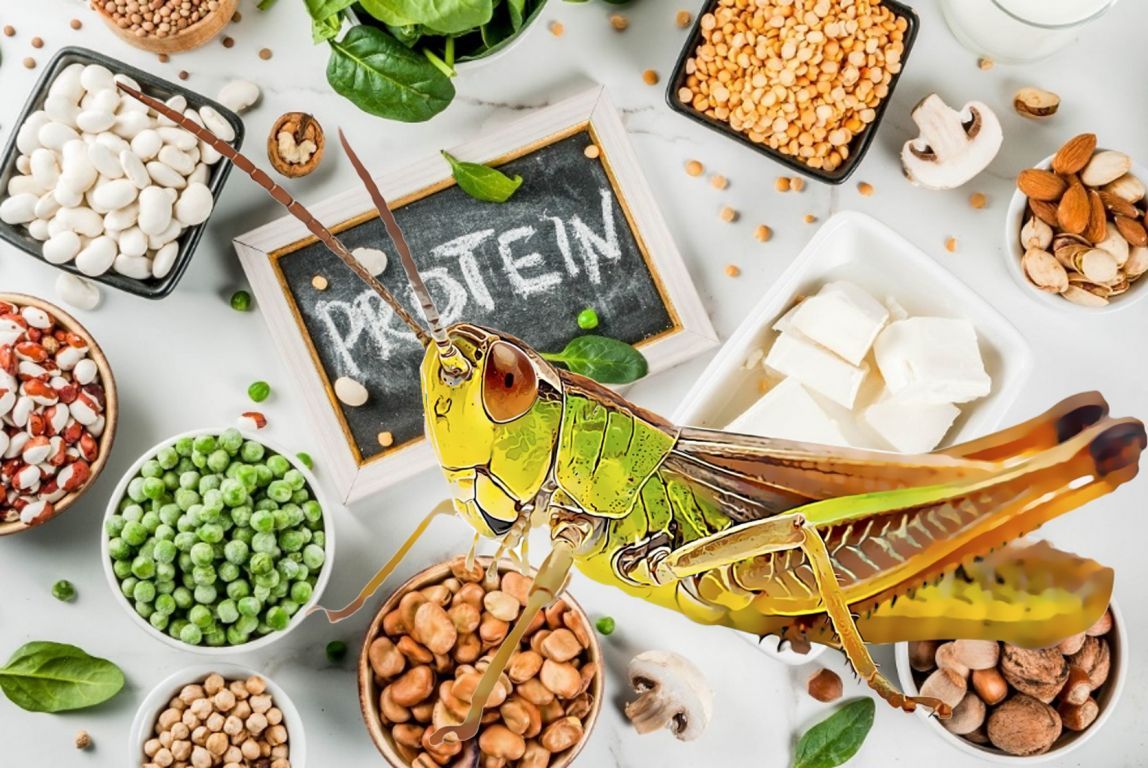As the alternative food market continues to boom across the world, the question that consumers and producers have on their mind is “what’s next?”
Will another soy product take popularity again? Will oat milk gain favor over almond? Will pea protein be the thing to watch in 2021?
Free Whitepaper
Product Lifecycle Management: Learn how to drive innovation, reduce costs and risks and eventually gain a competitive advantage.
We’ve all seen growth in alternative meat and dairy products in our grocery stores. And even the fast food industry has begun adding alternatives to their menu with chains like McDonald’s and KFC making vegan burgers and imitation chicken tenders their staples.
But this influx in new, innovative alternatives to meat and dairy products is only the beginning. What about bugs? If pea milk isn’t exciting enough, maybe cricket protein bars are?
Edible insects can be hard to grasp at the surface, but the need and interest for them is more and more on the radar.
The demand for alternative protein
There are many factors contributing to the demand for alternative proteins, which cannot be attributed purely to consumer demands.
- Consumer demand for sustainable food – More than ever before, consumers are demanding food that won’t contribute to global warming the way that livestock production does. Generation Z wants plant-based alternative proteins even more than Millennials do, and there’s evidence that this isn’t a youthful fad to them, but dietary choices they intend to make throughout the whole of their lives.
- Consumer demand for cruelty-free food – The vegan movement, once on the fringes of society, is now increasingly mainstream. While environmental concerns are certainly tied into this very closely, the other truth is that more and more consumers are frustrated with how animals are treated, and they’re no longer buying into the happy farm images on product packaging.
- Government and NGO pressure for sustainable food – It’s not just consumers who want to see more alternatives to meat and dairy products on the market. Government agencies and nonprofit organizations are advocating for an increase in more sustainable food that can meet the needs of a growing population without negatively impacting the environment as severely. The consensus is that preserving farmland and water resources are crucial to feed future generations.
- Government and consumer need for nutritional balance – Together, government health administrators and consumers agree that health is paramount when it comes to food. Particularly with younger generations, food awareness is an important part of a consumer’s life, where much of the food they consume is researched in advance. Alternative proteins are generally healthier than meat as they decrease risk for disease, and provide a rounder nutrient intake. Governments have started to push for better awareness of healthy proteins, where in the US for example, schools have begun implementing reduced meat options and/or annual “meatless” lunch days.
Even meat companies are investing in non-animal protein ingredients manufacturers because the need to satisfy the world’s growing demand for protein is so imminently clear.
Plant-based protein
As a result of this demand, sales of plant-based protein products are growing fast. According to new research, the plant-based protein segment of the market was the largest share of the total global alternative protein market. The plant-based segment is valued at an estimated $8.96 billion in 2019 and is projected to grow at a CAGR of 8.1% and rise to $14.32 billion by 2025.
What exactly does plant-based protein entail? It is not just the soy-based tofu and tempeh that typically come to mind. Lentil and chickpea powder are replacing wheat in pasta, hemp seeds are being baked into vegan brown bread, and the milk made from pea protein is forming the ice cream that we know and love.
More and more, planted-based alternatives are not synonymous with “otherworldly” recipes and food products. Protein alternatives have adapted to suit the needs of all eaters, regardless of their cuisine preferences.
A different protein alternative: bugs!
Much to the public’s surprise, one increasing segment of protein alternatives is edible insects. Crickets are expected to account for the most growth in edible insects, as they are easy to farm and full of protein.
Currently, in majorly Western countries, eating insects is either a delicacy, a matter of heritage, or a conquest. Insects have found their way in eclectic food and hobby shops, often packaged as a snack with enticing disclaimers such as “eat if you dare!” On the higher end, insects are plated with expensive artistry in experimental cuisine.
They’re certainly not a major staple in the diet, as the general public regards bug eating with a “yuck” factor. However, recent food trends for alternative meat eating suggest that consumers could be susceptible to incorporating bugs to regular eating, as only within the last decade has veganism become mainstream; who is to say that the same response cannot happen with insect eating?
Previous generations largely opposed vegan food culture before it became acceptable – if veganism is an indication of consumers’ willingness to change, bug eating may not be far off.
In fact, the global insects market is forecasted to hit roughly $8 billion by 2030. That’s a whopping CAGR of 24.4% between 2019 and 2030. It’s not too outlandish to say that this growth will be one of the fastest the food industry has seen in recent years. And it is not so much of a surprise, as the UN’s Food & Agriculture Organization has been encouraging insect eating since 2013. In other words, this topic is not in uncharted territory.
The PLM system that will work best for you (bugs or no bugs)
While established brands – the big name pasta producers who have made legume based pasta a staple in their stock, for example – are investing in alternative proteins at increasingly higher rates, there’s also a ton of competition from new startups.
How can product innovators match the growing market demands so they don’t get lost against other ambitious companies?
A crucial strategy is to make innovation cycles as smooth and streamlined as possible so that there is more opportunity for testing new flavors and recipes.
SpecPage’s own SaaS PLM helps innovators develop and manage these new formulas with a system that allows users to work in the cloud from anywhere in the world. With this PLM, companies can streamline their processes to come up with the next big alternative product – whether that uses pea protein, grasshoppers, or crickets.
One thing is for certain: the world wants and needs alternative proteins and the companies who can innovate tasty products fast will win.




